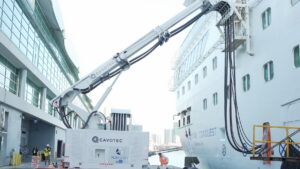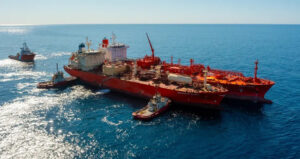With contraction in vessel supply and healthy demand growth, the dry bulk shipping market is expected to recover from 2017 onwards, according to the latest edition of the Dry Bulk Forecaster, published by global shipping consultancy Drewry.
The consultancy has reported an impressive outlook for dry bulk demand coupled with a small orderbook of newbuilds as a percentage of the total fleet capacity will ensure a sustained recovery in the dry bulk market.
Earnings in the dry bulk market are expected to improve from 2017 with a narrowing supply-demand gap. Demand is projected to grow at a healthy pace of 3% while supply is expected to grow by about 1% from 2017, making the dry bulk segment an interesting market to invest in.
Drewry views the growth in demand originating from a rise in iron ore and thermal coal trade. Coal demand is expected to rise mainly from developing Asian countries including Vietnam, South Korea, Taiwan and China.
In PTI’s ‘How to Navigate the Dry Bulk Market’ technical paper by Captain Yusuf Soomro, Marine Consultant of international marine consultancy TMC, he said: “The depressed state of the bulk market today is more a result of the overall supply of ships than a statement on the world economy.
“Ship-owners gambled that China’s appetite for coal would keep growing, but the country’s policy of weaning itself off dirty energy, and a levelling-off of steel production has contributed to a decline in imports, leaving another glut of new vessels and rock-bottom rates for their owners.”
Drewry added in its report that the rise in Chinese domestic steel consumption will provide employment to VLOCs and Capesize vessels carrying iron ore in the market.
However, it says that on the other hand, Vale’s new project S11D has become “the most cost effective iron ore mining project and will increase iron ore supply from Brazil increasing total tonne miles”.
This, Drewry believes, will help demand for bigger vessels in the long term.
It added that the supply side is projected to grow by just 1% from 2017 because of high scrapping and a thin orderbook.
The environmental regulations on Ballast Water Treatment System (BWTS) will become effective in September 2017 and IMO’s regulation on use of low sulphur fuel oil in 2020 which will result in high scrapping of old tonnages.
Drewry believes shipowners will prefer to scrap their old tonnage, with low earnings potential, than incur additional cost on scrubber and Ballast Water Treatment Systems.
But the consultancy has stated that a contracting orderbook and low future new orderings due to limited financing availability are keeping a check on future deliveries and at this point in time, the orderbook as a percentage of the total fleet – a strong indicator of future deliveries – currently stands at a decade low.
“The outlook for the dry bulk shipping market continues to be positive as the supply and demand gap continues to narrow. Charter rates are expected to improve for most of the dry bulk segments in 2017 with the steepest recovery expected in Capesize segment. Average charter rates are expected to rise from $8,000 per day in 2016 to $12,800 per day level in 2017 and will further improve from 2018,” commented Rahul Sharan, Drewry’s lead analyst for dry bulk shipping.
Watch an exclusive PTI Interview (below) with Fergal Buttimer, Owner/MD of the Buttimer Group – a firm with expertise in bulk materials handling systems and high-quality steel fabrication, give his views on the port industry.









